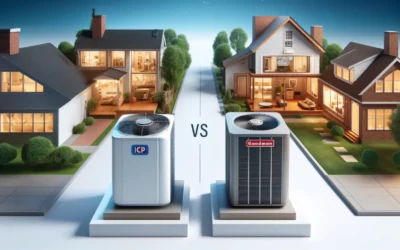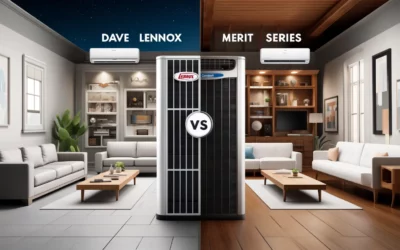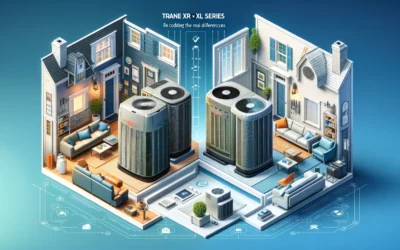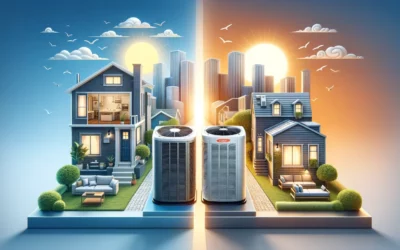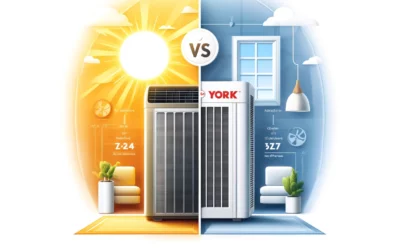Welcome to our expert guide on “Choosing the Best Insulation for Your Attic Home”. In this post, we will share invaluable insights that will steer you towards making the most suitable choice for your attic insulation. We understand that attic insulation is a crucial element in maintaining the comfort, health and energy efficiency of your home. Hence, it’s important to choose wisely. Our comprehensive guide, backed by expert opinion and factual information, is crafted to guide you through each step of this important decision-making process. We assure you that our practical advice and educational content is beneficial whether you’re upgrading your existing insulation or undergoing a new project. So let’s start this informational journey and help you create a more comfortable and eco-friendly home.
Understanding the Basics of Attic Insulation
Before diving into the nitty-gritty of insulation types, it’s important to understand the measure of insulation. This is known as the R-value, which refers to the insulation’s resistance to heat flow. A higher R-value means better insulating effectiveness. The recommended R-value for attics is R-38 (which is approximately 12-15 inches, depending on the insulation type). However, those living in colder climates might want to aim for R-49.
When it comes to the types of insulation, there are four main options:
- Blown-in cellulose: This eco-friendly option is made of recycled paper products. Its R-value is approximately 3.2-3.8 per inch.
- Blown-in mineral wool: This option offers a high R-value of around 3.1-3.4 per inch, and it’s flame resistant.
- Fiberglass batts: This option is usually found in new construction and has an R-value of around 2.9-4.3 per inch. It’s less expensive, but the installation process could be time-consuming.
- Spray foam: This is the most expensive option, with a high R-value of around 3.7-6.2 per inch. It requires professional installation.
Consider the following table for a quick comparison of these insulation types:
| Type | R-value per inch | Remarks |
|---|---|---|
| Blown-in Cellulose | 3.2-3.8 | Eco-friendly, made from recycled paper |
| Blown-in Mineral Wool | 3.1-3.4 | High R-value, flame resistant |
| Fiberglass Batts | 2.9-4.3 | Less expensive, installation could be time-consuming |
| Spray Foam | 3.7-6.2 | High R-value, Requires professional installation |
Remember, insulation isn’t a one-size-fits-all scenario. It’s about finding the insulation type that suits your needs, budget, and specific attic conditions. In the end, a well-insulated attic can provide comfort and contribute to significant energy savings in the long run.

Evaluating the Different Types of Insulation Available
When selecting insulation for your attic home, it’s crucial to consider various factors such as the climate, home design, and your budget. A few common types of insulation to explore include fiberglass, cellulose, and spray foam. Fiberglass is common due to its affordability and non-flammability. However, it might not be the best choice for very cold climates. Cellulose has a higher R-value (a measure of insulation’s thermal resistance) than fiberglass and is typically made from recycled materials, making it an eco-friendly options. Spray foam, on the other hand, provides excellent R-values and seals off air leaks, but tends to be more expensive. Below is a summary of these insulations:
| Type of Insulation | Pros | Cons |
|---|---|---|
| Fiberglass | Affordable, non-flammable | Not ideal for very cold climates |
| Cellulose | High R-value, eco-friendly | Possible settling over time |
| Spray Foam | High R-value, air sealing | More expensive |
Despite this, the choice of insulation isn’t limited to these three options. Mineral wool, cotton, and sheep’s wool are other alternatives. Mineral wool is fire-resistant and soundproof, but can be costlier and harder to install. Cotton is safe and easy to install, but less common and pricier. Sheep’s wool is effective, easy to install but can be expensive. Remember, the choice of insulation should ideally be based on a balance between cost-effectiveness, performance, and the specific needs of your attic home. Consulting an insulation expert can provide tailored advice to suit your unique circumstances.
Importance of R-Value in Selecting the Right Insulation
When it comes to picking the most suitable insulation for your attic, understanding the concept of R-value can be highly beneficial. Often overlooked by homeowners, the R-value is an essential yardstick that measures the thermal resistance of any insulation material. In layman’s terms, the R-value determines how effectively your insulation can prevent heat transfer, keeping your home warm during cold months and cool during warmer seasons. Thus, a high R-value signifies a high-performing insulation, that can tirelessly bridle the heat flow, thereby ensures energy efficiency and attractive savings in your energy bills in the long run. The criticality of the R-value goes sky-high while selecting attic insulation because attics can be epicenters for considerable heat loss. Remember, every type of insulation possesses a unique R-value depending on the material, thickness, density, and most importantly, how and where it is installed. As a rule of thumb, fiberglass and cellulose insulation come with an R-value ranging from R-2.9 to R-3.8 per inch, while spray foam insulations can attain R-values between R-3.6 and R-7.4 per inch. To further simplify the selection process, we have put together this brief comparison of popular insulation materials in the table below.
| Insulation Type | R-Value per Inch |
|---|---|
| Fiberglass (batt) | R-2.9 to R-3.8 |
| Cellulose (blow-in) | R-3.2 to R-3.8 |
| Spray Foam (closed-cell) | R-6.0 to R-7.4 |
Note that these R-values are merely averages, and actual R-values can vary based on multiple factors. Remember, achieving an optimum balance between the cost-efficiency and effectiveness of the insulation is inevitable to prevent substantial energy loss and guarantee a comfortable, cost-efficient domicile.
A Deep Dive into the Cost and Energy Efficiency of Different Insulation Materials
When it comes to insulating your home, particularly the attic, there are several materials to consider. Each one has its own set of characteristics, including cost and energy efficiency. The right choice ultimately depends on your specific needs and goals. Let’s delve into the key information you need to understand the different options available.
Commonly used insulation materials include fiberglass, cellulose, mineral wool, and spray foam. Fiberglass is affordable and non-combustible but offers lower energy efficiency. Cellulose is made from recycled paper, which makes it eco-friendly, but it can settle over time, reducing its insulation efficiency. Mineral wool is incredibly fire-resistant, but it is also more expensive. Finally, spray foam offers high energy efficiency and acts as a moisture barrier, but it has a higher upfront cost.
| Material | Cost (per sq.f) | Energy Efficiency (R-value per inch) |
|---|---|---|
| Fiberglass | $0.4 – $0.6 | R-2.2 to R-2.7 |
| Cellulose | $0.6 – $2.0 | R-3.2 to R-3.8 |
| Mineral Wool | $1.0 – $2.0 | R-3.2 to R-3.8 |
| Spray Foam | $1.0 – $3.0 | R-3.5 to R-6.5 |
In addition to considering these factors, you must also take into account your geographic location and local climate as they play a significant role in determining the most effective insulation for your attic.

Expert Recommendations: Choosing the Best Insulation for Your Specific Needs
When it comes to insulating your attic, it’s vital to consider the specific needs of your home. Not all materials provide the same level of resistance against heat flow, also known as the R-value. Factors such as climate, cost, safety, and the structural components of your attic will significantly affect the type of insulation you should opt for. Below we have expertly recommended three types of insulation best suited for different situations.
- Batt Insulation: Made from flexible fibers, such as fiberglass or mineral wool, it’s ideal for attics with standard spaced beams and joists without many obstructions.
- Blown-in Insulation: Typically composed of loose fill fiberglass or cellulose, this type of insulation is perfect for attics with irregular joist spacing or many obstructions.
- Spray Foam Insulation: Known for its high R-value and superior air-sealing abilities, it’s suited to smaller or hard-to-reach areas of your attic.
To help you understand better, here’s a table showcasing the cost, R-value, and best use case for each insulation type:
| Insulation Type | Cost (per sq ft) | R-Value | Best Use Case |
|---|---|---|---|
| Batt Insulation | $0.50-$1.50 | R-3 to R-4 per inch | Standard spaced beams and joists |
| Blown-in Insulation | $1-$1.50 | R-3 to R-4 per inch | Irregular joist spacing or obstruction |
| Spray Foam Insulation | $2-$3 | R-5 to R-6 per inch | Smaller or hard-to-reach areas |
The best choice of insulation ultimately depends on the specific needs of your home. While Batt insulation may be the least expensive option, Spray foam insulation provides the highest resistance to heat flow. You should evaluate your needs based on comfort, efficiency, and budget.

Detailed Tips on Proper Installation and Maximizing Insulation Effectiveness
When it comes to installing insulation in your attic, the installation process is as crucial as the material choice itself. Proper installation ensures the effectiveness of your insulation material, helping to maintain your home’s temperatures and reducing energy bills. Here are a few tips:
- Ensure that there are no cracks or leaks in your attic. These can hinder the insulating properties of any material, allowing heat or cold to bypass the insulation. A comprehensive inspection should be done before installation.
- Ensure that your insulation material fits accurately between the framing in your attic. Gaps can diminish the effectiveness, enabling heat transfer. If necessary, trim the insulation to fit.
- Cover all areas properly. Areas around recessed lights, wiring, and plumbing should be insulated. However, always ensure a safe distance is kept around anything that generates heat, like light fixtures, to avoid fire hazards.
Once the insulation is properly installed, there are several measures to take in order to maximize its effectiveness. Remember, effective insulation doesn’t just reduce heat loss in winter or intensity in the summer, but it could also potentially lower your utility bills. Be sure to:
| Action | Details |
|---|---|
| Seal all windows and doors in your attic | They are the highest source of heat loss. Weatherstrip and caulk to seal air leaks and consider window insulating films. |
| Use insulating curtains or blinds | They create an additional barrier against cold glass. They can also reduce heat gain during the summer months. |
| Regularly inspect your insulation | Monitor for any signs of wear and tear or any areas that may require more insulation over time. |
- Add radiant barriers. These are installed in homes—mostly in attics and are highly effective at cooling hot climates. The reflective surface prevents heat absorption, reflecting it away instead.
- Consider a vapor barrier. In some climates, adding a vapor barrier on the warm side of the insulation can prevent moisture-related issues like mold or mildew, enhancing insulation effectiveness and the overall health of your attic.
The Conclusion
In conclusion, choosing the right insulation for your attic home takes time, careful consideration, and expertise. With so many options available, it can be quite overwhelming. But remember, your home’s energy efficiency, comfort, and your family’s health are at stake when deciding on the best insulation. Don’t hesitate to reach out to a professional for advice. They will assist you in navigating through this complex process, ensuring your home is properly and effectively insulated. We hope you’ve found this expert guide useful and informative in helping you make an informed decision about the best insulation for your attic home. Remember, the best insulation solution is the one that perfectly marries your home’s needs and comfort, environmental considerations, and your budget. Once installed correctly, a great insulation system will save energy, cut down on bills, and provide you with a warm, comfortable living space. Thank you for taking the time to read this article. Now you are one step closer to creating a more energy efficient home. If you have any further questions, don’t hesitate to get in touch with us or a trusted insulation expert in your area. After all, turning your house into a comfortable and energy efficient home is a worthy investment.





